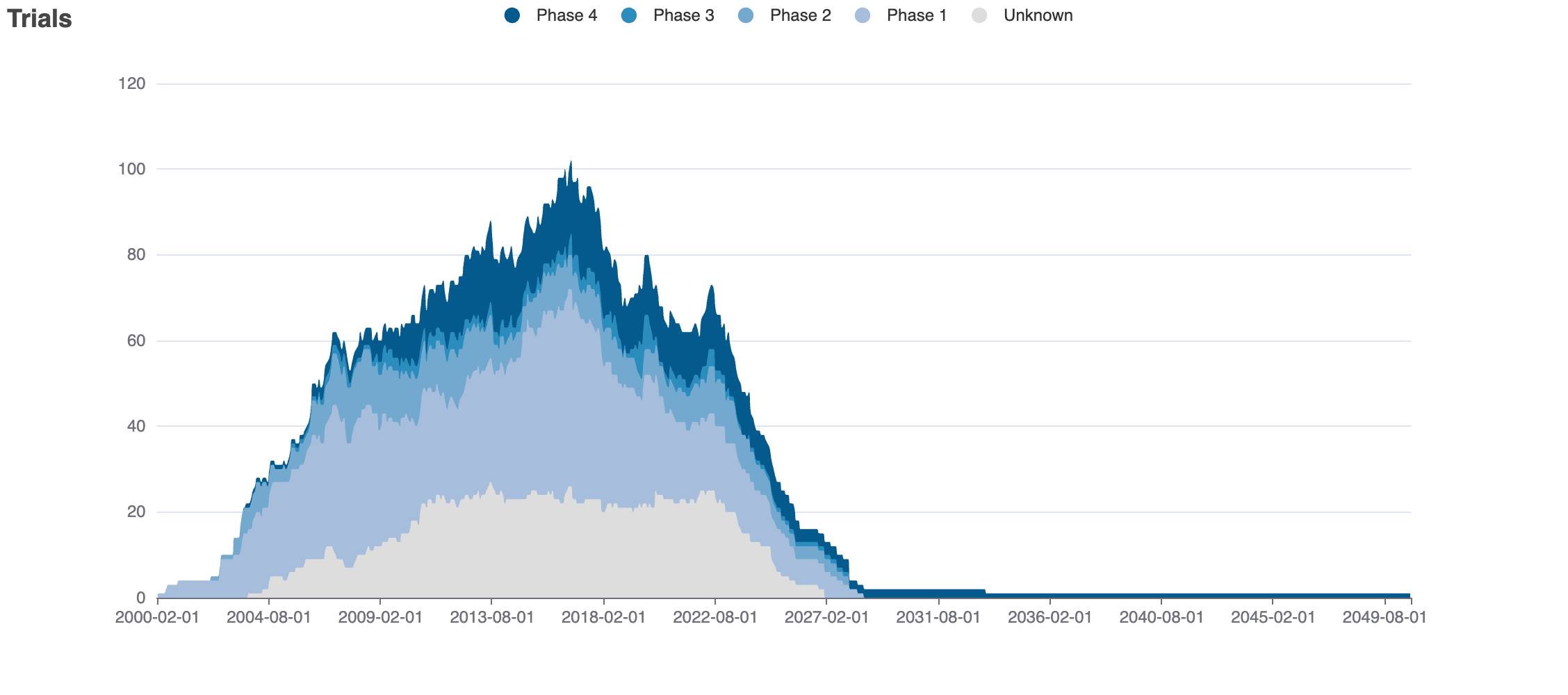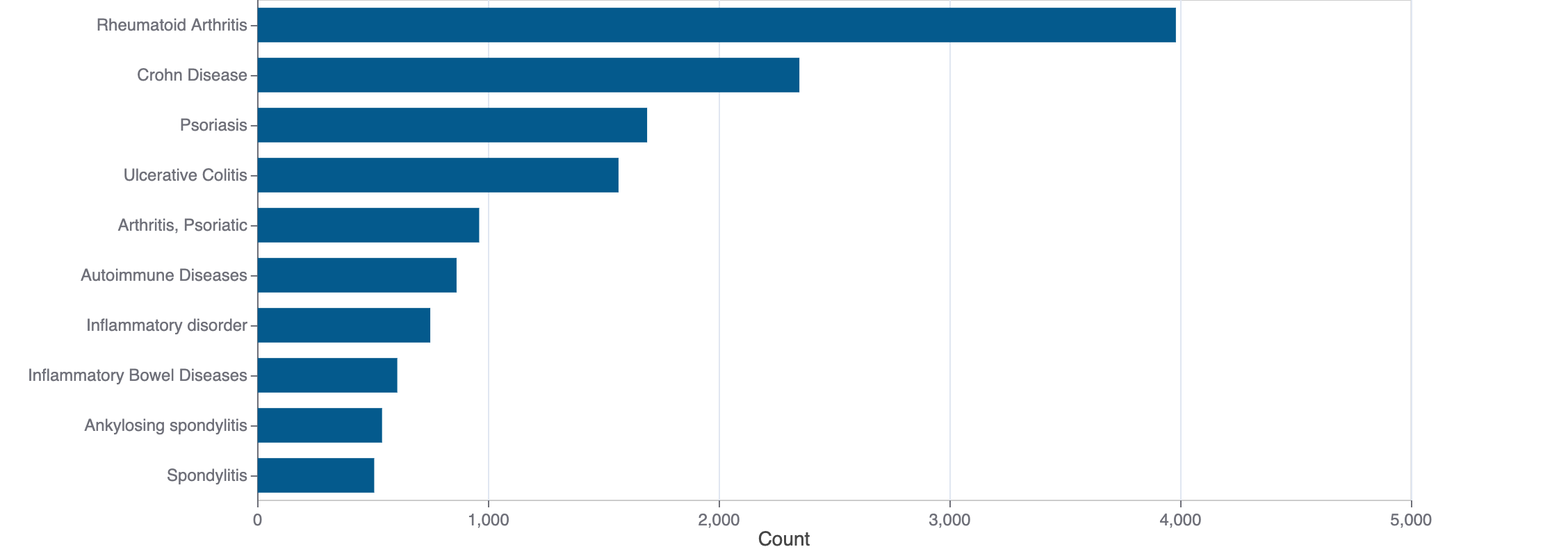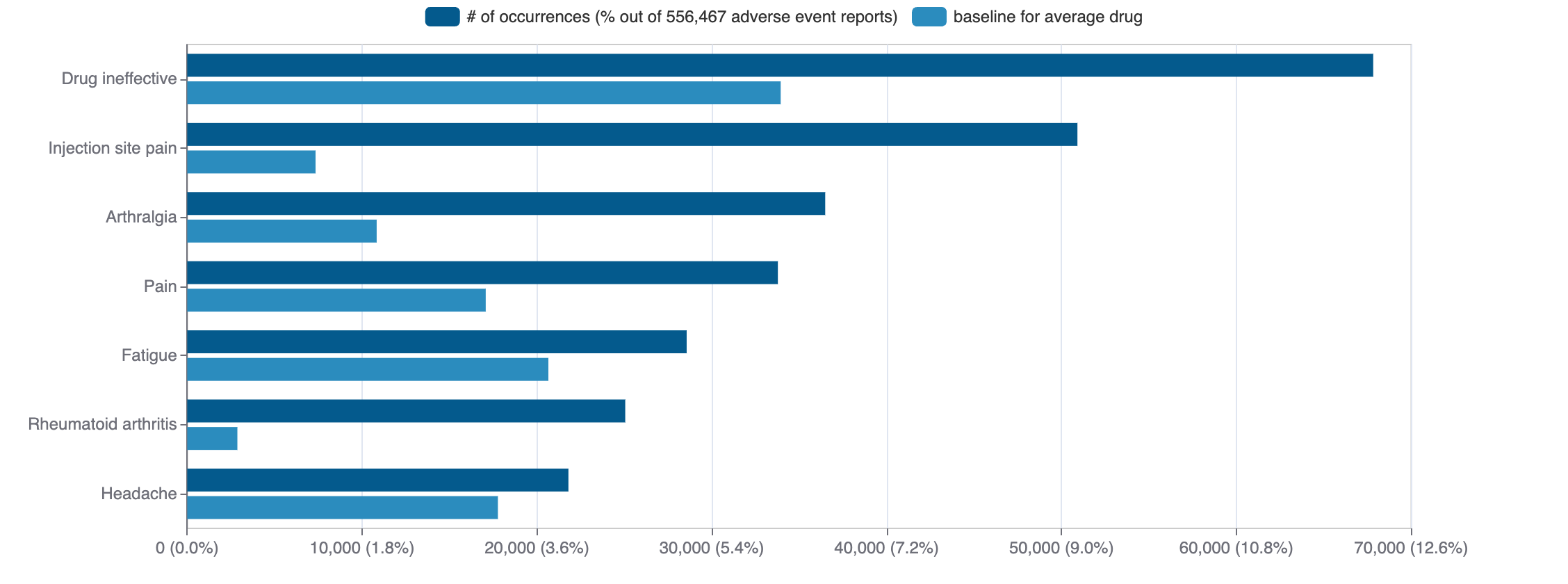Triamterene
Dyrenium, Maxzide (triamterene) is a small molecule pharmaceutical. Triamterene was first approved as Dyazide on 1982-01-01. It is used to treat edema, hypertension, and hypokalemia in the USA.
Download report
Favorite
Commercial
Trade Name
FDA
EMA
Dyrenium (generic drugs available since 1988-04-17)
CombinationsMaxzide (generic drugs available since 1988-04-17, discontinued: Dyazide)
Drug Products
FDA
EMA
New Drug Application (NDA)
New Drug Application (NDA)
Abbreviated New Drug Application (ANDA)
Abbreviated New Drug Application (ANDA)
Hydrochlorothiazide
+
Triamterene
Triamterene
Tradename | Company | Number | Date | Products |
|---|---|---|---|---|
| DYRENIUM | Concordia Laboratories | N-013174 RX | 1982-01-01 | 2 products, RLD, RS |
Labels
FDA
EMA
Brand Name | Status | Last Update |
|---|---|---|
| dyrenium | New Drug Application | 2020-08-07 |
| maxzide maxzide-25 | New Drug Application | 2018-07-20 |
| triamterene and hydrochlorothiazide | ANDA | 2023-06-07 |
Indications
FDA
EMA
Indication | Ontology | MeSH | ICD-10 |
|---|---|---|---|
| edema | — | D004487 | R60.9 |
| hypertension | EFO_0000537 | D006973 | I10 |
| hypokalemia | HP_0002900 | D007008 | E87.6 |
Agency Specific
FDA
EMA
No data
Patent Expiration
No data
HCPCS
No data
Clinical
Clinical Trials
575 clinical trials
View more details

Mock data
Subscribe for the real data
Subscribe for the real data
Indications Phases 4
Indication | MeSH | Ontology | ICD-10 | Ph 1 | Ph 2 | Ph 3 | Ph 4 | Other | Total |
|---|---|---|---|---|---|---|---|---|---|
| Macular edema | D008269 | 8 | 11 | 20 | 4 | 10 | 50 | ||
| Knee osteoarthritis | D020370 | EFO_0004616 | M17 | 3 | 4 | 2 | 12 | 5 | 24 |
| Macular degeneration | D008268 | EFO_0001365 | H35.30 | 3 | 4 | 8 | 1 | 3 | 17 |
| Retinal vein occlusion | D012170 | EFO_1001157 | H34.81 | 2 | 4 | 5 | 1 | 5 | 16 |
| Alopecia areata | D000506 | EFO_0004192 | L63 | 1 | 3 | — | 6 | 4 | 13 |
| Keloid | D007627 | EFO_0004212 | L91.0 | 1 | 2 | 1 | 3 | 6 | 12 |
| Oral lichen planus | D017676 | 3 | 4 | 1 | 2 | 2 | 12 | ||
| Shoulder pain | D020069 | HP_0030834 | M25.51 | — | 3 | — | 3 | 4 | 10 |
| Carpal tunnel syndrome | D002349 | EFO_0004143 | G56.0 | — | 1 | 2 | 1 | 7 | 10 |
| Atopic dermatitis | D003876 | EFO_0000274 | L20 | — | 3 | — | 4 | 2 | 9 |
Show 65 more
Indications Phases 3
Indication | MeSH | Ontology | ICD-10 | Ph 1 | Ph 2 | Ph 3 | Ph 4 | Other | Total |
|---|---|---|---|---|---|---|---|---|---|
| Diabetic retinopathy | D003930 | EFO_0003770 | 5 | 5 | 4 | — | — | 11 | |
| Bursitis | D002062 | EFO_1000941 | M71.9 | 1 | — | 2 | — | 8 | 11 |
| Cataract | D002386 | EFO_0001059 | H26.9 | — | 2 | 3 | — | 4 | 8 |
| Gouty arthritis | D015210 | — | 1 | 3 | — | — | 4 | ||
| Chronic pancreatitis | D050500 | EFO_0000342 | K86.1 | — | — | 1 | — | 2 | 3 |
| Hip osteoarthritis | D015207 | EFO_1000786 | M16 | — | 1 | 1 | — | 1 | 3 |
| Vitiligo | D014820 | EFO_0004208 | L80 | — | 2 | 1 | — | 1 | 3 |
| Ischemic optic neuropathy | D018917 | EFO_1000809 | H47.01 | 1 | 1 | 1 | — | — | 2 |
| Chemotherapy-induced febrile neutropenia | D064146 | — | 1 | 1 | — | — | 2 | ||
| Liver transplantation | D016031 | EFO_0010682 | — | — | 2 | — | — | 2 |
Show 33 more
Indications Phases 2
Indication | MeSH | Ontology | ICD-10 | Ph 1 | Ph 2 | Ph 3 | Ph 4 | Other | Total |
|---|---|---|---|---|---|---|---|---|---|
| Alzheimer disease | D000544 | EFO_0000249 | F03 | 1 | 1 | — | — | 12 | 13 |
| Cognitive dysfunction | D060825 | G31.84 | 2 | 2 | — | — | 6 | 9 | |
| Kidney transplantation | D016030 | 1 | 5 | — | — | — | 5 | ||
| Liver neoplasms | D008113 | EFO_1001513 | C22.0 | 1 | 4 | — | — | — | 4 |
| T-cell lymphoma cutaneous | D016410 | C84.A | 1 | 1 | — | — | 1 | 3 | |
| Psoriasis | D011565 | EFO_0000676 | L40 | 1 | 2 | — | — | — | 3 |
| Transcranial direct current stimulation | D065908 | 1 | 1 | — | — | 2 | 3 | ||
| Asthma | D001249 | EFO_0000270 | J45 | — | 1 | — | — | 2 | 3 |
| Therapeutics | D013812 | — | 1 | — | — | 1 | 2 | ||
| Melanoma | D008545 | — | 1 | — | — | 1 | 2 |
Show 33 more
Indications Phases 1
Indication | MeSH | Ontology | ICD-10 | Ph 1 | Ph 2 | Ph 3 | Ph 4 | Other | Total |
|---|---|---|---|---|---|---|---|---|---|
| Schizophrenia | D012559 | EFO_0000692 | F20 | 1 | — | — | — | 7 | 8 |
| Cicatrix | D002921 | HP_0100699 | L90.5 | 1 | — | — | — | 2 | 3 |
| Neuralgia | D009437 | EFO_0009430 | 1 | — | — | — | 1 | 2 | |
| Leiomyoma | D007889 | HP_0000131 | D25 | 1 | — | — | — | — | 1 |
| Adenomyosis | D062788 | EFO_1001757 | N80.0 | 1 | — | — | — | — | 1 |
| Humeral fractures | D006810 | EFO_0003943 | S42.3 | 1 | — | — | — | — | 1 |
| Vasoconstriction | D014661 | 1 | — | — | — | — | 1 | ||
| Papilledema | D010211 | EFO_1001074 | H35.81 | 1 | — | — | — | — | 1 |
| Acoustic neuroma | D009464 | HP_0009588 | 1 | — | — | — | — | 1 | |
| Drug interactions | D004347 | 1 | — | — | — | — | 1 |
Show 4 more
Indications Without Phase
Indication | MeSH | Ontology | ICD-10 | Ph 1 | Ph 2 | Ph 3 | Ph 4 | Other | Total |
|---|---|---|---|---|---|---|---|---|---|
| Healthy volunteers/patients | — | — | — | — | — | 7 | 7 | ||
| Memory disorders | D008569 | — | — | — | — | 4 | 4 | ||
| Dementia | D003704 | F03 | — | — | — | — | 4 | 4 | |
| Psychotic disorders | D011618 | F20.81 | — | — | — | — | 3 | 3 | |
| Major depressive disorder | D003865 | EFO_0003761 | F22 | — | — | — | — | 3 | 3 |
| Parkinson disease | D010300 | EFO_0002508 | G20 | — | — | — | — | 3 | 3 |
| Skin diseases | D012871 | L00-L99 | — | — | — | — | 3 | 3 | |
| Hemianopsia | D006423 | H53.46 | — | — | — | — | 2 | 2 | |
| Essential tremor | D020329 | EFO_0003108 | G25.0 | — | — | — | — | 2 | 2 |
| Frontotemporal dementia | D057180 | G31.0 | — | — | — | — | 2 | 2 |
Show 73 more
Epidemiology
Epidemiological information for investigational and approved indications
View more details
Drug
General
| Drug common name | TRIAMTERENE |
| INN | triamterene |
| Description | Triamterene is pteridine substituted at positions 2, 4 and 7 with amino groups and at position 6 with a phenyl group. A sodium channel blocker, it is used as a diuretic in the treatment of hypertension and oedema. It has a role as a diuretic and a sodium channel blocker. |
| Classification | Small molecule |
| Drug class | — |
| Image (chem structure or protein) | |
| Structure (InChI/SMILES or Protein Sequence) | Nc1nc(N)c2nc(-c3ccccc3)c(N)nc2n1 |
Identifiers
| PDB | — |
| CAS-ID | 396-01-0 |
| RxCUI | 10763 |
| ChEMBL ID | CHEMBL585 |
| ChEBI ID | — |
| PubChem CID | 5546 |
| DrugBank | DB00384 |
| UNII ID | WS821Z52LQ (ChemIDplus, GSRS) |
Target
Agency Approved
No data
Alternate
No data
Variants
Clinical Variant
No data
Financial
No data
Trends
PubMed Central
Top Terms for Disease or Syndrome:

Mock data
Subscribe for the real data
Subscribe for the real data
Additional graphs summarizing 1,887 documents
View more details
Safety
Black-box Warning
Black-box warning for: Dyrenium
Adverse Events
Top Adverse Reactions

Mock data
Subscribe for the real data
Subscribe for the real data
116 adverse events reported
View more details
Premium feature
Learn more about premium features at pharmakb.com
Learn more
